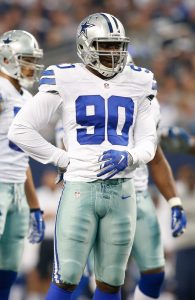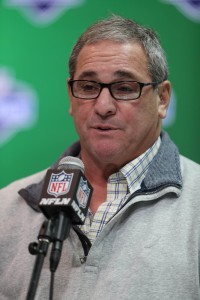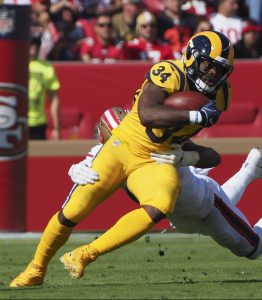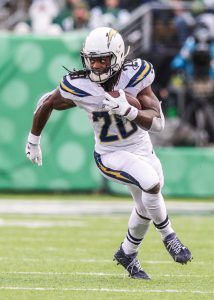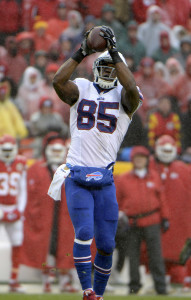Max Unger retired Saturday in a manner befitting his wildly underrated career. He didn’t announce intentions before the 2018 season began, or post a statement on social media. Instead, Unger’s retirement simply showed up on the NFL’s transactions wire when his name was listed on the reserved/retired list. Unger, who came to New Orleans in exchange for tight end Jimmy Graham and a first-round pick in 2015, earned one first-team All-Pro berth, three Pro Bowl nods, and one Super Bowl ring during his excellent 10-year career.
But by hanging up his cleats, Unger has left the Saints in a bit of a lurch. Fully expected to compete for championships for the rest of Drew Brees‘ career, New Orleans now has a gaping hole in the middle of its offensive line. The only realistic option on the Saints’ roster to replace Unger is 2017 undrafted free agent Cameron Tom, who some observers have considered New Orleans’ center-in-waiting.
The Saints are clearly fans of Tom, as they bumped up his practice squad salary during the 2017 campaign in order to keep him from leaving for another club. After two years in the New Orleans system, Tom should be familiar with the club’s offense, but he’s started only one game for the Saints since being promoted in October 2017. Pro Football Focus assigned Tom poor marks for his 178 offensive snaps last year.
If the Saints aren’t comfortable moving forward with Tom as their starting center, they’ll have three paths available via which they could find a new pivot: the upcoming draft, a trade, or by sorting through the remaining free agents. Let’s take a look at each avenue:
Draft
After entering the 2017 draft with the fifth-most draft capital in the NFL, the Saints have since eschewed the concept of acquiring top-end, controllable assets over the past two seasons. With the now-40-year-old Brees under center, it’s difficult to argue with that win-now approach, but the strategy has limited New Orleans’ ability to place multiple bets in the draft. In 2018, the Saints started the draft with only 30.2 point of draft value (29th in the league), and my preliminary calculations have the club in the same range or lower for 2019.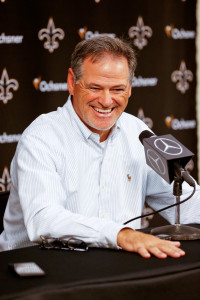
In fact, following a series of trades executed by general manager Mickey Loomis, New Orleans has only one selection — No. 62 — inside the draft’s first 167 picks. The Saints didn’t just give those picks away, of course, as they moved up to acquire defensive end Marcus Davenport in the first round of last year’s draft before picking up veterans Teddy Bridgewater and Eli Apple for third- and fourth-round slots, respectively. But barring a trade down next month, New Orleans will make only one choice within the first five rounds of the 2019 draft.
If the Saints want to find a center via the draft, history tells us they should use that 62nd overall pick to do so. Why? It’s pretty hard to find a center in the later rounds of the draft. I looked at all the centers taken in the fifth round or later of each draft since 2011, the year when the NFL’s new collective bargaining agreement was installed. That CBA put more limitations on practice time, which likely made it harder to develop players at more cerebral positions such as center.
From 2011-17, 18 centers were drafted in Rounds 5-7. Of those 18, only three (16.7%) started more than 10 games during their respective rookie seasons: Jason Kelce (2011 Eagles), Corey Linsley (2014 Packers), and Luke Bowanko (2014 Jaguars). It’s difficult enough to find starting-caliber players at any position in the fifth round or later, but adding a late-round starter at center — where that player will be expected to make protection calls from day one — seems exceedingly risky.
So who could the Saints look at with their second-round pick? Dane Brugler of The Athletic (subscription required) lists four center within his top-80 2019 prospects. North Carolina State’s Garrett Bradbury comes in at No. 14, so he’s unlikely to be available for New Orleans when its 62nd selection rolls around, but Texas A&M’s Erik McCoy (No. 40), Mississippi State’s Elgton Jenkins (No. 44), and Penn State’s Connor McGovern (No. 78) could be in consideration.
Trade
Center depth isn’t plentiful around the NFL, so most teams aren’t going to be lining up to trade their the pivot to the suddenly-needy Saints. And as we’ve already discussed, New Orleans doesn’t have the sort of early-round draft capital needed to target an established starter. More likely, the Saints will need to swap one of its late-round selections — either in this year’s draft or from 2020 — in order to land a current backup.
Here are a few options the Saints could target via trade:
Ethan Pocic (Seahawks): Pocic was the 58th overall pick as recently as 2017, but he wasn’t a key factor on a Seattle offensive line that greatly improved in 2018. Under new offensive line coach Mike Solari, the Seahawks moved from 30th in Football Outsiders’ adjusted line yards — which attempts to parse out responsibility for a club’s run-game success — to 12th in 2018, but Pocic started just four games and played only 296 offensive snaps. Viewed as a poor scheme fit for Seattle, Pocic doesn’t really have a role heading into the 2019 campaign, meaning he could be available for a cheap price.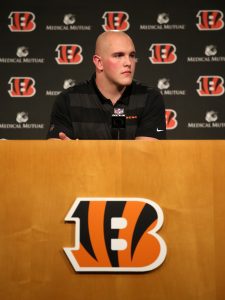
Billy Price (Bengals): Cincinnati doesn’t typically admit its draft mistakes in short order, so the idea of the club moving on from Price after only one season is probably far-fetched. And it’s not entirely fair to call Price a mistake: while PFF charted him as a bottom-four center and one of the lowest-graded first-round rookies, Price was still recovering from a torn pectoral when the regular season got underway, and later missed six games with a foot injury. Still, the Bengals now have a new coaching staff in place, and placed a second-round tender on 26-year-old restricted free agent Trey Hopkins, who excelled at center in Price’s absence.
Ted Karras (Patriots): New England offensive line coach Dante Scarnecchia is a miracle-worker. Two of his former pupils — left tackles Nate Solder and Trent Brown — have reset the offensive line market in consecutive offseasons, and the Patriots’ front five ranked top-three in both adjusted sack rate and adjusted line yards last year. Maybe Karras could bring some of that wisdom to New Orleans? Although he’s only started five games over three seasons, it’s not like Karras hasn’t put anything on tape, as PFF placed him on its All-Preseason team in 2018 after he allowed just one sack and one hurry on 82 pass-blocking snaps.
Free Agency
The first wave of free agency is already over four days after the market officially opened, and the top two free agent centers are off the board. Mitch Morse became the league’s highest-paid center after agreeing to a four-year, $44MM deal with the Bills, while the Panthers landed Matt Paradis on a three-year, $27MM pact. Other veterans capable of playing center, such as Spencer Long, Eric Kush, Jonotthan Harrison are already spoken for, too, leaving the Saints with few options if they want go the free agency route.
However, New Orleans still has a small list of available centers that are capable of starting:
Nick Easton: This is the one free agent center we know the Saints are targeting, as Easton met with New Orleans last week. The 26-year-old Easton has interest from the Vikings — for whom he played from 2015-18 — and at least one other unidentified team, so New Orleans may have to up its offer in order to land him. That could be a problem given left tackle Terron Armstead, left guard Andrus Peat, and right guard Larry Warford will each count for more than $9MM on the Saints’ 2019 salary cap. Easton, for his part, started 12 games at guard and center for the 2018 Vikings, but missed all of last season with a neck injury.
John Sullivan: The Rams opted to decline Sullivan’s option for the 2019 season, but that doesn’t necessarily mean he’s no longer able to play. Los Angeles would have had to pay Sullivan $4.25MM for next year plus a $2MM option bonus, and that sum would have placed the 11-year veteran inside the top-15 highest-paid centers. At age-33, Sullivan is no longer worth that money. The real problem, though, was Sullivan’s production: while he was as available as ever (16 starts and 95.8% of snaps), Sullivan allowed 37 pressures, the most of any center in the league per PFF.
Travis Swanson: A former third-round pick of the Lions, Swanson has plenty of experience under his belt, having started 53 games over the past five seasons. Working against Swanson is the fact that he was released by the Jets — a team that desperately needed competent offensive linemen — last September. Swanson, rebounded, however, latching on with the Dolphins and eventually becoming Miami’s starter for 12 games after Daniel Kilgore went down with a season-ending injury. He played 92% of the Dolphins’ snaps after taking over, allowing only 2.5 sacks and committing just one penalty, per Stats LLC.
Brett Jones: Jones isn’t a very attractive option if you look only at 2018, as he started just three games after being traded from the Giants to the Vikings in exchange for a seventh-round pick. Jump back one season, though, and Jones looks like a starting-caliber player. A former undrafted free agent, Jones started 13 games and excelled for New York in 2017. PFF assigned him its fourth-highest pass-blocking efficiency score among centers, and charged him with multiple pressures allowed in just one of his starts. That performance was enough for the Giants to utilize a second-round restricted free agent tender on Jones.
Stefen Wisniewski: Still only 29 years old, Wisniewski was benched by the Eagles in Week 5 after a lackluster performance at left guard. Wisniewski hasn’t played center since the 2015 campaign, but it was his primary position from 2011-15 when he made 77 starts for the Raiders and Jaguars. He’s probably a better fit for the Saints as a contingency plan rather than as an outright starter.
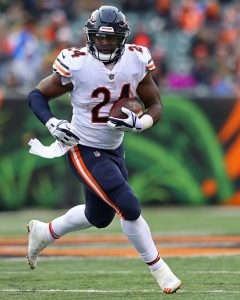 Patriots DC backs out: Greg Schiano reversed course on his commitment to become the Pats’ defensive coordinator. The former Buccaneers head coach decided this week to vacate his new role, barely a month after accepting it. Schiano spent the past three seasons as an Ohio State assistant head coach. His decision has Bill Belichick rumored to be taking on more responsibilities next season. The Pats lost longtime DC Matt Patricia during last year’s hiring period and de facto DC Brian Flores is now the Dolphins’ head coach, putting the defending Super Bowl champs in a bit of a bind.
Patriots DC backs out: Greg Schiano reversed course on his commitment to become the Pats’ defensive coordinator. The former Buccaneers head coach decided this week to vacate his new role, barely a month after accepting it. Schiano spent the past three seasons as an Ohio State assistant head coach. His decision has Bill Belichick rumored to be taking on more responsibilities next season. The Pats lost longtime DC Matt Patricia during last year’s hiring period and de facto DC Brian Flores is now the Dolphins’ head coach, putting the defending Super Bowl champs in a bit of a bind.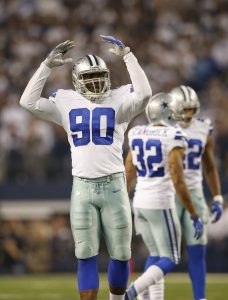 Nelson, Lechler, Lang say goodbye: More Pro bowlers are leaving the game. Jordy Nelson, Shane Lechler and T.J. Lang announced their respective retirements this week. All three players were free agents. Nelson will call it quits after 11 seasons — 10 of which in Green Bay. Although Nelson was only a one-time Pro Bowler, he was one of this era’s premier scorers at the receiver position. He finished as a top-five Packer in receptions, receiving yards and touchdown grabs. Lechler did not play last season but logged 18 years as a punter, one of the best the NFL has ever seen. The former Raiders and Texans specialist finished with six first-team All-Pro nods — the most ever for a punter. A two-time Pro Bowler, Lang spent two seasons with the Lions after an eight-year Packers run. The veteran guard ran into injury trouble in Detroit, most notably dealing with concussion issues in recent years.
Nelson, Lechler, Lang say goodbye: More Pro bowlers are leaving the game. Jordy Nelson, Shane Lechler and T.J. Lang announced their respective retirements this week. All three players were free agents. Nelson will call it quits after 11 seasons — 10 of which in Green Bay. Although Nelson was only a one-time Pro Bowler, he was one of this era’s premier scorers at the receiver position. He finished as a top-five Packer in receptions, receiving yards and touchdown grabs. Lechler did not play last season but logged 18 years as a punter, one of the best the NFL has ever seen. The former Raiders and Texans specialist finished with six first-team All-Pro nods — the most ever for a punter. A two-time Pro Bowler, Lang spent two seasons with the Lions after an eight-year Packers run. The veteran guard ran into injury trouble in Detroit, most notably dealing with concussion issues in recent years.